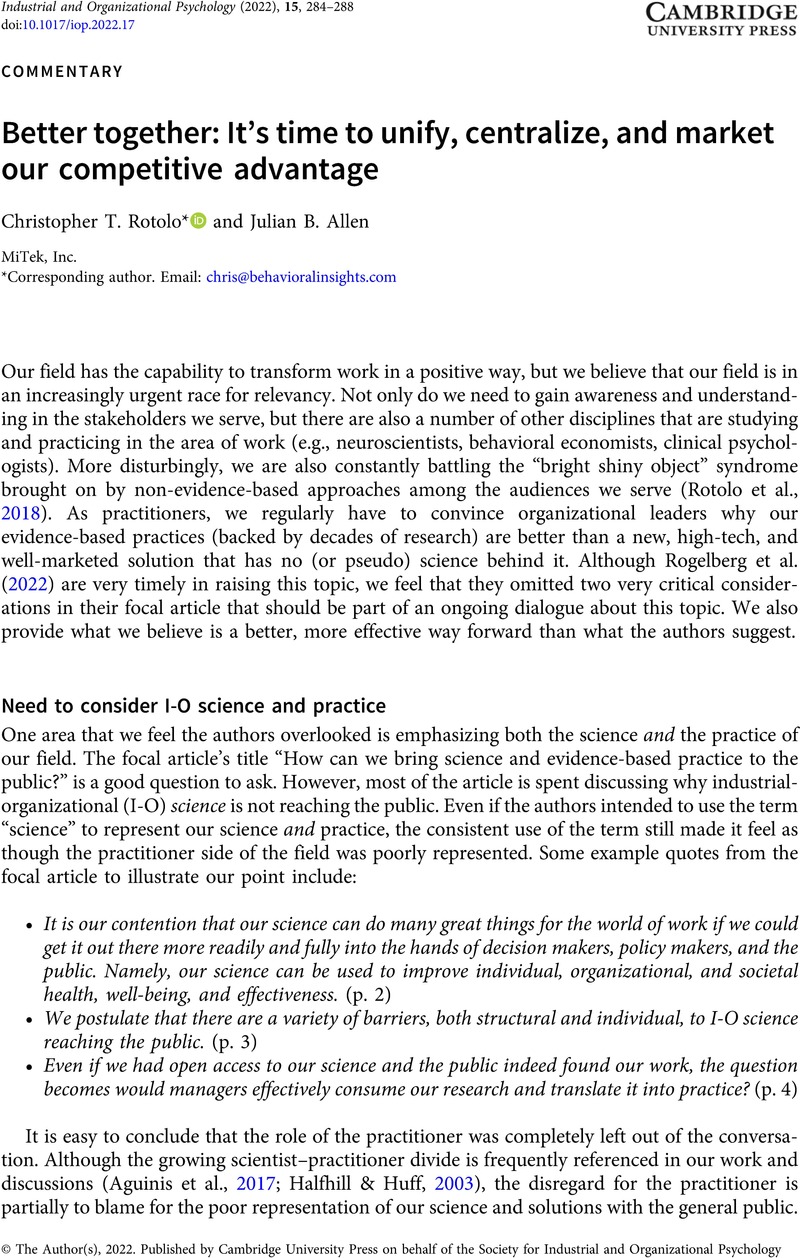Crossref Citations
This article has been cited by the following publications. This list is generated based on data provided by Crossref.
Adetayo, Adebowale Jeremy
Oketunji, Ibidapo
and
Hamzat, Saheed Abiola
2023.
Mentoring support for librarians' research productivity in southwestern Nigeria: A study of quantity of publications in quality outlets and online channels.
The Journal of Academic Librarianship,
Vol. 49,
Issue. 1,
p.
102625.





